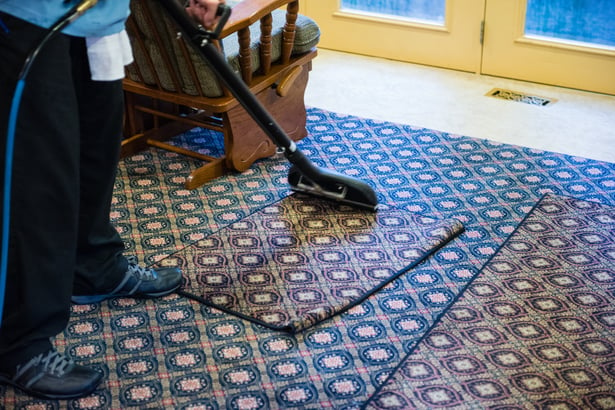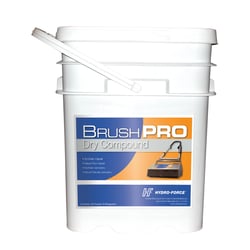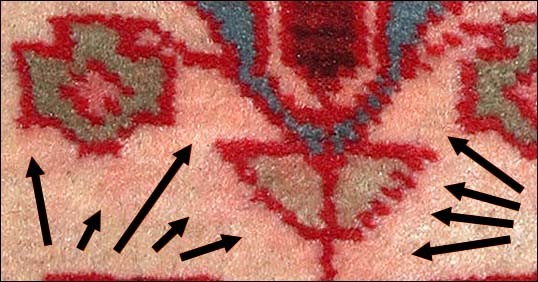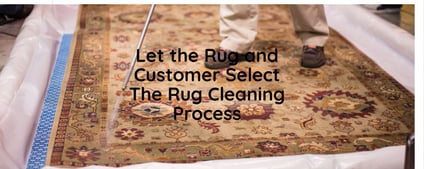Dye bleeding is generally rare in carpets because nylon and polyester fibers are not prone to color loss from water-based cleaning.
Dye management is a significant concern when cleaning wool fiber with water-based solutions. Typically, this is a result of sub-standard dyes and improper dyeing procedures. This issue makes cleaning with hot water and/or alkaline solutions a special issue for wool. Another factor that creates difficulty with dye maintenance is the presence of urine in rugs where pets are part of the family.
Dye bleed is not my problem unless I do not identify the problem before cleaning
First and foremost, any rug that will bleed with products designed for wool is either defective or contaminated with an agent—usually urine-- that breaks down dyes (sadly, defective rugs are proliferating in the area rug trade).
I would not work on any rug that will bleed without a signed release from the customer. Typically, locating and testing for dye bleed needs to be part of pre-inspection. Look around areas of color contrast on the rug to locate previous issues. Evidence of previous bleeding should be noted and acknowledged by the owner of the rug. This rug should be cleaned as a bleeder.
Reference these steps for cleaning:
- For other rugs, lightly rub dark colors with a white towel in several areas of the rug using a water-based spotter.
- Any evidence of dye release should be followed with other towels saturated with your preferred cleaning solution.
- Place a heavy object on a towel and leave it on for several minutes in areas of particular concern (presence of urine, areas where dye bleed would be noticed). If dye bleed is present then you should adjust the method and/or chemistry to manage dye bleed throughout the cleaning and drying process.
Dye bleed can be minimized with the right process and chemistry
The appropriate chemistry, the cleaning method, and the amount of water used will impact the amount of dye released. The good news is that dye-bleed can be managed when cleaning rugs.
Sometimes you sacrifice potential cleaning performance to preserve the aesthetic integrity of the rug. There are special polymers that attach themselves to the dyes. One of the polymer’s early uses was in laundry detergent. It was added so that loss of color from blue jeans in washing did not add blue dye to white cotton. The blue solution was drained out during the rinse cycle. In a similar way, polymers added to the rug washing process would not prevent the loose dyes from leaving the fiber but would work to keep the loose dyes from bonding to other fibers in the rug.
If you want to watch a video of us performing this process you can do so here.

At some point, there needs to a separation of dye-bleed tinted water from the rug. In my opinion, adding extraction at critical points during your process really helps to limit dye-bleed. Extraction removes loose dye more efficiently and quickly than a squeegee. The squeegee in the wash pit (elevated pits work better for dye removal) can use enough water to flush away the loose dyes. There are wash tubs for rugs that use chemistry similar to laundry detergents that handle loose dye. These rugs are removed from the tubs and centrifuges will remove most of the water infused with excess dyes.
Useful Tips to Remember for Optimal Results
- Coldwater is better at limiting bleeding than hot water.
- Acidic solutions will limit bleeding better than alkaline solutions.
- The wetter the rug the more readily the rug will bleed.
- A low moisture cleaning with quick dry time has little risk of bleeding.
- An extraction cleaning utilizing dye bleed control additives readily removes the dye tainted solution through vacuum extraction. This can be through a conventional wand extraction or through a tool called the Rug Sucker. Both of these methods, quickly remove the dye bleed thoroughly using enough water to facilitate this process.
-Pit or tub wash methods release the most visible dye and are not for the faint of heart. These methods use copious amounts of water in the rug washing process followed by the use of squeegees, elevated pits, and vacuum or centrifuge extraction techniques. The final step of speed drying can be useful as dye bleed stops once the rug is dry. 
Saving a $20,000 Manchester Kashan Rug with the Right Products
When it comes to a urine-contaminated rug, you have no choice but to pit or tub wash. Years ago, I participated in the cleaning of a urine-saturated 12 x 20 Manchester Kashan. This beautifully crafted rug was worthless in its current condition but was worth $20,000 rug if the urine could be removed.
The dyes were not stable when we tested normal cleaning solutions. The rug showed the potential to bleed even with an acidic cleaning solution. We tested and eventually treated it with a product with polymers designed to limit bleeding. Due to how expensive the rug was, we used the polymer solution, acidic pre-spray, and an acidic phosphate rinse which carried away the soils, urine, and dye-bleed from it. We never left the acid side, and the use of the thorough pit wash cleaning process overcame the weakness of our cleaning chemistry and restored the rug to its original beauty and condition.
In short, pay attention to dye bleeding as it can be a costly mistake if not prequalified to the customer as one of the risks of cleaning. The ability to overcome this issue will give you great confidence as you wash more and more rugs.
For additional training beyond our blogs check out our educational classes: Hands on Rug Cleaning Aramsco/ Interlink Supply Training Schedule (cvent.com)
Featured Products

Bridgepoint Systems, Wool Cleaning, Wool Medic Dye Stabilizer and Urine Release 1 Gallon

Hydro-Force, Dry Cleaner, Brush Pro Dry Compound 20 lbs

Bridgepoint Systems, Upholstery Cleaning, Dye-Loc No Bleed Rinse 1 Gallon
Enjoyed reading this post? Read the following articles:





